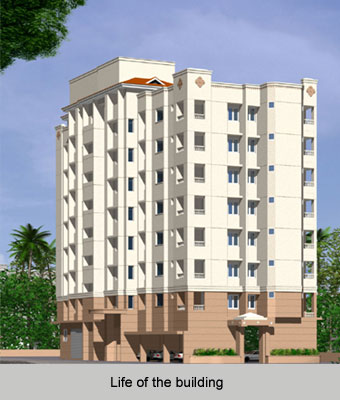 Vastu Shastra provides exhaustive information about the life of a building for instance, what are the right ways to use a room and what should be the proper area of that room i.e. what should be the length and the breadth. As a result certain rules have been formulated.
Vastu Shastra provides exhaustive information about the life of a building for instance, what are the right ways to use a room and what should be the proper area of that room i.e. what should be the length and the breadth. As a result certain rules have been formulated.
The principles of Ayam are not applicable for buildings with a carpet area less than 2000 sq. ft. these will be only prove beneficial when applied to buildings with a carpet area of more than 2000 sq. ft. For flats and small buildings Ayam principles are, thus, not applicable. Such principles are referred as Vastu Chintamani, Muhurat Martanda or Samrangana Sutradhar.
To start with the area of the building needs to be by multiplying the length and the breadth. This area will again be multiplied by nine and the product will be divided by eight. The remainder is known as Ayam in Vastu Shastra. The Vedic science further divides the Ayam into 8 categories:
(1) Dhwajayam (2) Dhumayam (3) Simhayayam (4) Shwanayam (5) Vrishabhayam (6) Kharayam (7) Gajayam (8) Kakayam.
Dhwajayam: For this Ayam the formula to calculate the area is as follows-
If the remainder is one it is called Dhwajayam. This is an auspicious ayam. it will be more beneficial put this Ayam to use for constructing bathrooms. It is also useful for steel factories, cloth mills, sugar and rice mills. However if the remainder is Zero it will provide medium level benefits.
2) Dhumayam: When the remainder amounts to 2 it is known as Dhumayam. This would only be useful in building is kitchens in the south-east direction. According to Vastu Shastra Dhumayam is the harbinger of numerous troubles but primarily it adversely affects the health of the women in the house.
3) Simhayam: Here, too, the formula is the same. In all the Ayams the formula remains the same. What varies is the remainder. Depending on these remainders Vastu Shastra predicts the auspiciousness and the inauspiciousness of the houses.
In case the remainder is 3 it is known as Simhayam. This Ayam leads to the destruction of the enemy and victory of the self. Economic and physical happiness is also related with it. Therefore keeping in mind the measurements of Simhayam the bedroom of the head of the family should be constructed in the south direction. Courts, Parliament house, Goverment offices, industrial establishments, commercial complexes and hostels could be constructed by following this.
4) Shwanayam: If the remainder is 4 it is known as shwanayam. Shwanayam is the perfect Ayam only for lumber-room or storeroom. These should be constructed in the southwest direction. Shwanayam can give good results for hospitals, orthopedics, hardware store, libraries and others.
5) Vrishabhayam: In this Ayam the remainder will amount to 5. This is an auspicious ayam resulting in the accumulation of wealth. Dining room, bedroom, study room or meditation room should be constructed to the West of the residential building as per Vrishabhayam measurements. This would be quite useful for schools, colleges research centers, cotton mill, textile, sugar factories, receptions halls, auditoriums and others.
6) Kharayam: The formula to calculate this ayam is as follows:
If the remainder is 6 it is known as Kharayam. It results in making a man lethargic, even an addict. Hence it is inauspicious in the construction of residences. Garage, granary, godown or servants quarters can be built only in the northwest direction and at a distance of 2 to 3 feet from the wall compound.
7) Gajayam: This is considered auspicious as it leads to prosperity. The remainder in this kind of Ayam will be 7. With its measurements sitting room or strong room can be built in the north directions. it will prove fruitful for schools, lodgings, commercial establishments, cold storages and shops.
8) Kakayam: According to the last kind of Ayam only temples can be built with its measurements in the northeast directions. The remainder here will be 8.




















